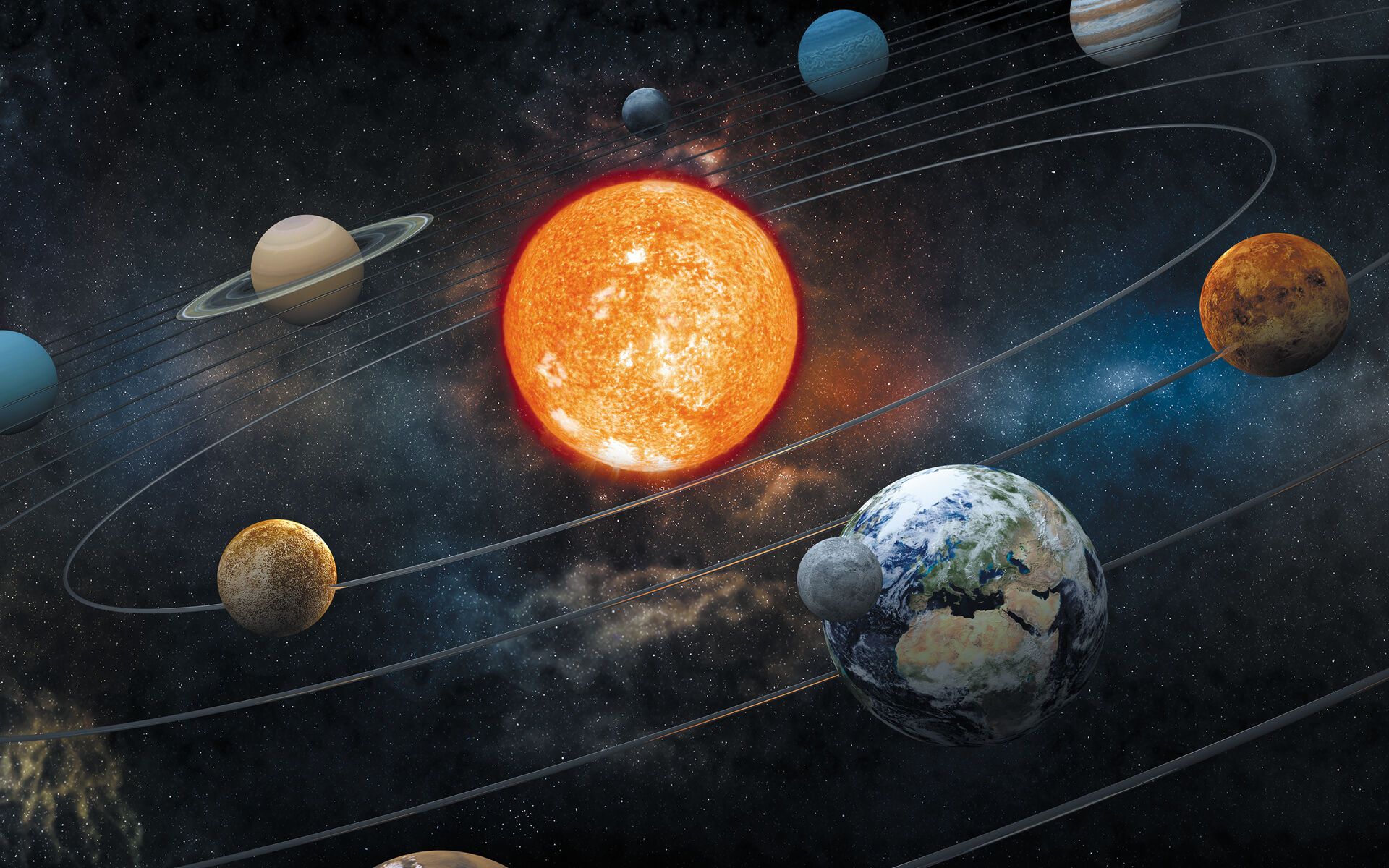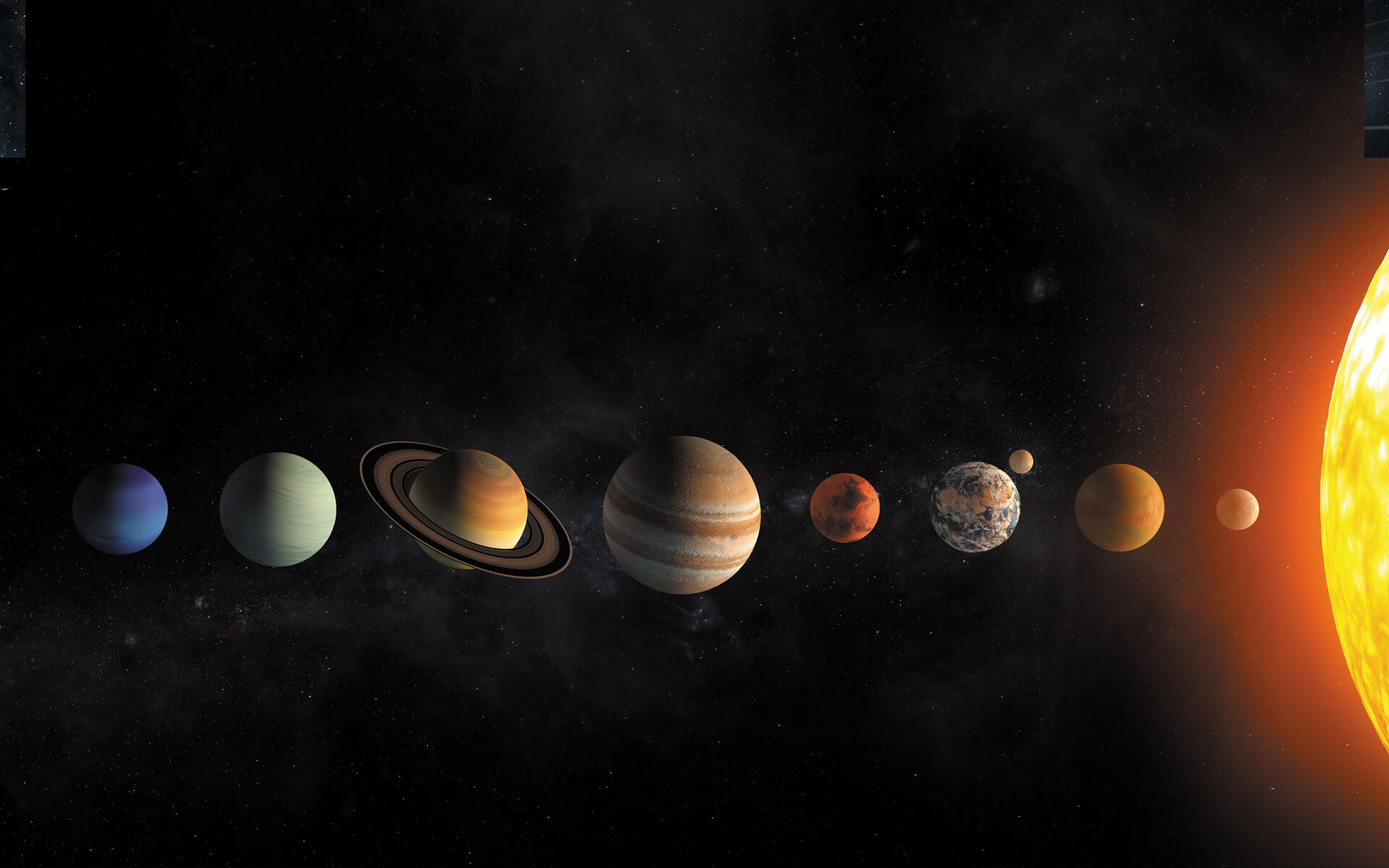Planets

In This Article
-
The distances of planets to the Sun are not random. They seem to follow a mathematical sequence.
-
It is not a coincidence that these planets are positioned like beads of a rosary according to a special mathematical formula.
-
The mathematical sequence planets are estimated to follow is called Bode’s law. First announced by German astronomer Johann Daniel Titius, in 1766, this sequence was later popularized by J. E. Bode in 1772, recognized among the astronomical community as it held true for the distances of six planets – all that were known at that time – from the Sun.
The solar system consists of planets, dozens of moons, and millions of asteroids, comets, and meteors revolving around the Sun at its center. Along with all these celestial bodies revolving it, the Sun turns around the Milky Way. This movement model is called the spiral model.
The planets in the solar system, based on their proximity to the Sun, are Mercury, Venus, Earth, Mars (terrestrial planets), Jupiter, Saturn, Uranus, Neptune (Jovian planets), and Pluto (if accepted as a planet). The terrestrial planets are closer to the Sun. They are smaller and denser than Jovian planets. They have rocky surfaces and their cores are molten. Venus, Earth, and Mars have atmospheres. Mercury, on the other hand, does not have an atmosphere, as its surface gravity is not enough to keep atmospheric gases around the planet. Mercury is the closest planet to the Sun, but the surface temperatures on Venus are significantly higher compared to Mercury due to its dense atmosphere (also known as the greenhouse effect). For this reason, Venus is the hottest planet in the solar system.

Jovian planets are larger than terrestrial planets. They consist mainly of gases, and they have lower densities and do not have rocky surfaces. They have a small, liquid and solid core. Their atmospheres consist of the same elements as the terrestrial planets. The density of Saturn is 0.687 gram per cubic centimeter. This makes it the only planet in the solar system with a density less than water. Neptune and Uranus are the coldest ice giants of our solar system.
Pluto is small and cold, and it is hard to observe. It consists of ice and rocks and has a thin atmosphere and a very low gravity.
As is seen, although they are assumed to have formed from the same nebular dust, each planet is unique manifesting magnificent beauty.
The Sun accounts for 99.86 percent of the total mass of the solar system. All other celestial bodies combined (planets, asteroids, satellites, meteors, etc.) make for only 0.14 percent of mass. This is similar to the fact that about 99.9 percent of an atom’s mass belongs to the nucleus and 0.1 percent is coming from the electrons. The Sun is approximately 333,000 times heavier than Earth. It is so large that it can house approximately 1.3 million Earths inside it [1]. However, the Sun is a medium-sized star compared to hundreds of thousands of stars in the Milky Way.
The Sun's mass is 27 million times greater than that of the Earth’s moon [2]. During a total eclipse of the Sun, the moon moves in between the Sun and Earth. The moon's diameter is approximately 400 times smaller than the Sun's, and the moon is approximately 400 times closer to the Earth than the Sun [3]. The moon’s perfect positioning makes a total eclipse possible.
Distances and dimensions in the universe are so huge that astronomers use special units to define distances in space. Commonly used units for space include astronomical units (AU), light years, and parsecs.
An astronomical unit is the average distance of Earth from the Sun. Earth's orbit is elliptical, and the Sun is not properly at its center. The minimum distance between Earth and the Sun is approximately 147 million km, and the maximum distance is approximately 152 million km along the semi major axis. The average of these distances is called 1 AU and equals approximately 149.6 million km [4].
One light year is the distance light can travel in space in one year, and it is calculated as 9.46 trillion km. The speed of light in a void is around 300,000 km per second (299,792,458 km/s). 1 parsec is approximately 3.26 light years.
The distances of planets to the Sun are not random. They seem to follow a mathematical sequence called Bode's sequence. This sequence was first announced by German astronomer Johann Daniel Titius, in 1766. The sequence, popularized later by J. E. Bode in 1772, became very popular among the astronomical community as it held true for the distances of six planets – all that were known at that time – from the Sun [5]. The planets were found to conform considerably to this sequence. This sequence became all the more important with the discovery of Uranus, in 1781, as this sequence predicted the distance of Uranus from the Sun. Bode's sequence starts with 0, followed by 3, and then, the next number is the twice the previous number.
0; 3; 6; 12; 24; 48; 96; 192; 384; …
Actual distances of planets from the Sun:
| Mercury | Venus | Earth | Mars | Jupiter | Saturn | Uranus | Neptune | Pluto |
| 0.387 AU | 0.723 AU | 1 AU | 1.524 AU | 5.203 AU | 9.539 AU | 19.18 AU | 30.06 AU | 39.52 AU |
To adapt this sequence to the distances of planets from the Sun, Bode added 4 to these numbers before dividing them by 10. These changes do not break the original sequence. Adding 4 to the numbers of Bode's sequence:
0+4=4; 3+4=7; 6+4=10; 12+4=16; 24+4=28; 48+4=52; 96+4=100; 192+4=196; 384+4=388
and then, dividing them by 10, we get:
0.4; 0.7; 1; 1.6; 2.8; 5.2; 10; 19.6; 38.8 (AU).
Looking again at the distances of planets from the Sun, we see that these distances are very much like the numbers calculated by Bode:
| Mercury | Venus | Earth | Mars | Ceres | Jupiter | Saturn | Uranus | Neptune | Pluto | |
| Actual distances from the Sun | 0.387 AU | 0.723 AU | 1 AU | 1.524 AU | 2.7 AU | 5.203 AU | 9.539 AU | 19.18 AU | 30.06 AU | 39.52 AU |
| Bode's Sequence | 0.4 | 0.7 | 1 | 1.6 | 2.8 | 5.2 | 10 | 19.6 | 38.8 |
This sequence suggests that there should be a planet at a distance of 2.8 AU from the Sun, but there is none. However, there is the asteroid belt (between 2.2 AU and 3.2 AU) at this position. Bode's law led to the discovery of the asteroids as a result of a search for a planet between Mars and Jupiter. The largest astronomical object at a distance of 2.7 AU from the Sun is Ceres. Ceres is the largest object in the main asteroid belt in orbit between Mars and Jupiter. Ceres has a width that is the half of the moon's, but its mass is 1 percent of the moon's. That is, it has a very low density. It is the largest asteroid in the solar system and has a round shape thanks to its gravity. Many astronomical sources refer to Ceres as a dwarf planet.
Neptune is the only planet that does not conform to Bode's sequence.
As seen, the planets are not randomly lined up around the Sun. It is not a coincidence that these planets are positioned like beads of a rosary according to a special mathematical formula.









